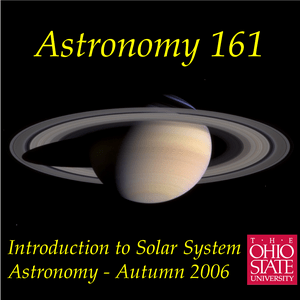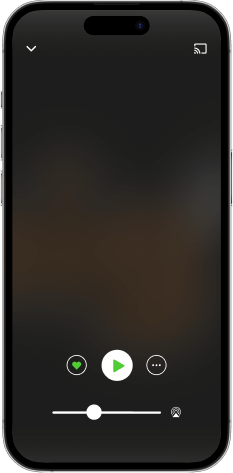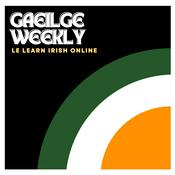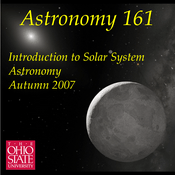Available Episodes
5 of 47
- Astronomy 141 Podcast TeaserA new podcast, Astronomy 141, Life in the Universe, is available for those interested in continuing an exploration of topics in modern astronomy.--------
- Lecture 46: ExoPlanets - Planets around Other StarsAre there planets around other stars? Are there Earth-like planets around other stars? Do any of those harbor life? Intelligent life? We'd like to know the answers to all of these questions, and in recent years we've made great progress towards at least answering the first. To date, more than 200 planets have been found around other stars, most in the interstellar neighborhood of the Sun, but a few at great distance. This lecture reviews the search for ExoPlanets, discussing the successful Doppler Wobble, Transit, and Microlensing techniques. What we have found so far are very suprising systems, especially Jupiter-size or bigger planets orbiting very close (few hundredths of an AU) from their parent stars. The existance of a significant population of so-called "Hot Jupiters" may be telling us that planetary migration can be much more extreme that we saw in our own Solar System, or that these planetary system formed in a very different way than ours. It seems appropriate to end this class with more questions than answers, but that's where the science becomes most exciting. Recorded 2006 Dec 1 in 100 Stillman Hall on the Columbus campus of The Ohio State University.--------
- Lecture 45: Is Pluto a Planet?What is a planet? Is Pluto a planet? This lecture traces the debate on the nature of what it means to be a planet by taking an historical approach, looking at how the question has arisen with the discovery of the asteroids and later Pluto and the Kuiper Belt. Many of the issued raised at the 2006 IAU General Assembly meeting were raised two centuries before after the discovery of Ceres and Pallas. We will end with the new definition of a planet, and why Pluto is better understood as a Dwarf Planet, among the two largest objects of the class of small icy bodies of the outer solar system, than as the smallest of the planets. Recorded 2006 Nov 30 in 100 Stillman Hall on the Columbus campus of The Ohio State University.--------
- Lecture 44: CometsComets are occasional visitors from the icy reaches of the outer Solar System. This lecture discusses the orbits, structure, and properties of comets, and introduces the "dirty snowball" model of a comet nucleus. The end of class was a demo where I created a model of a comet nucleus from common household and office materials. Imagine a twisted combination of Alton Brown and Emeril Lagasse with a PhD in Astrophysics and you get the idea. We were not able to arrange for a videographer to come, but we did get some stills before the batteries died on the digital camera. The pictures are on the lecture webpage. The lecture is slightly abbreviated because we did the student evaluation of instruction surveys before class started. Recorded 2006 Nov 29 in 100 Stillman Hall on the Columbus campus of The Ohio State University.--------
- Lecture 43: Icy Worlds of the Outer Solar SystemBeyond the orbit of Neptune is the realm of the icy worlds, ranging in size from Triton, the giant moon of Neptune, and the dwarf planets Pluto and Eris, all the way down to the nuclei of comets. This lecture discussed the icy bodies of the Trans-Neptunian regions of the Solar System, discussing the basic properties of Triton (the best studied such object), Pluto, Eris, and the Kuiper Belt, introducing the dynamical families of Trans-Neptunian Objects that record in their orbits the slow migration of Neptune outwards during the early history of the Solar System. The Kuiper Belt is the icy analog of the main Asteroid Belt of the inner Solar System: both are shaped by their gravitational interaction with giant gas planets (Jupiter for the asteroids, Neptune for the KBOs), and are composed of leftover raw materials from the formation of their respective regions of the Solar System. Recorded 2006 Nov 28 in 100 Stillman Hall on the Columbus campus of The Ohio State University.--------
More Education podcasts
Trending Education podcasts
About Astronomy 161 - Introduction to Solar System Astronomy
Astronomy 161, Introduction to the Solar System, is the first quarter of
a 2-quarter introductory Astronomy for non-science majors taught at The
Ohio State University. This podcast presents audio recordings of
Professor Richard Pogge's lectures from his Autumn Quarter 2006 class.
All of the lectures were recorded live in 100 Stillman Hall on the OSU
Main Campus in Columbus, Ohio.
Podcast websiteListen to Astronomy 161 - Introduction to Solar System Astronomy, The Mel Robbins Podcast and many other podcasts from around the world with the radio.net app

Get the free radio.net app
- Stations and podcasts to bookmark
- Stream via Wi-Fi or Bluetooth
- Supports Carplay & Android Auto
- Many other app features
Get the free radio.net app
- Stations and podcasts to bookmark
- Stream via Wi-Fi or Bluetooth
- Supports Carplay & Android Auto
- Many other app features


Astronomy 161 - Introduction to Solar System Astronomy
Scan code,
download the app,
start listening.
download the app,
start listening.




























